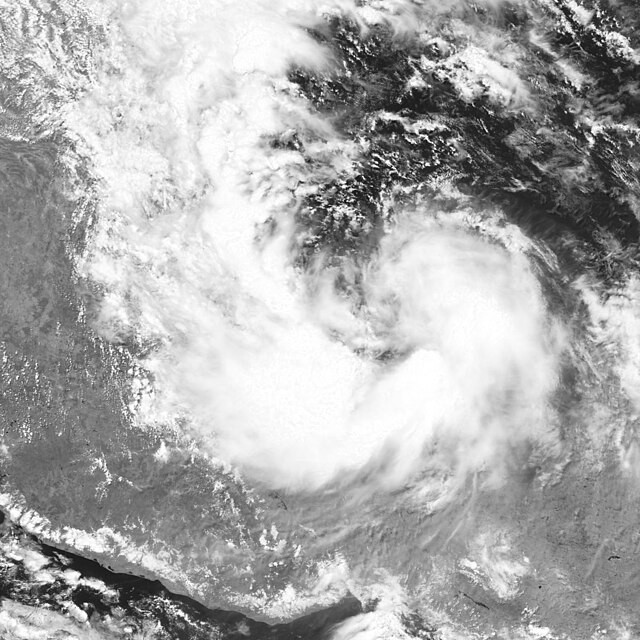Tropical Storm Alberto, the first named storm of the 2024 Atlantic hurricane season, has caused significant damage and fatalities as it moves inland over Mexico. The storm, which brought torrential rains and gusty winds, has been responsible for several deaths but has also raised hopes for alleviating the severe drought affecting the region.
Alberto made landfall in Mexico early Thursday morning, about 25 miles inland from Tampico, according to the National Hurricane Center (NHC). The storm, traveling west at 13 miles per hour, has been dropping heavy rainfall across northeastern Mexico and southern Texas. The NHC reported sustained winds of 45 miles per hour as of 8 a.m. EDT, which are expected to weaken as the storm progresses.
In Mexico, the storm's heavy rains have led to at least three confirmed deaths. Civil protection authorities in Nuevo Leon reported that one man drowned in the La Silla River in Monterrey, while two minors died from electric shocks in Allende municipality. The minors were reportedly riding a bicycle in the rain when the incident occurred.
Governor Samuel García of Nuevo Leon announced on social media that metro and public transportation services in Monterrey would be suspended from Wednesday night until midday Thursday due to the storm. He emphasized the need for safety measures as the region braced for further impacts from Alberto.
The storm's influence extended into Texas, where severe weather advisories were issued for millions along the southern coast. The combination of storm surge and high tide raised concerns about flooding, with coastal areas potentially seeing waters rise up to four feet. Surfside Beach, a city along the Texas Gulf Coast, experienced significant flooding, with several feet of water inundating the area.
Governor Greg Abbott of Texas issued a disaster declaration for 51 counties and activated the Texas National Guard to assist with the storm's aftermath. The deployment included more than 40 personnel, 20 vehicles, and Chinook helicopters to aid in rescue and relief efforts.
While the storm has caused destruction, it has also been seen as a potential boon for regions suffering from severe drought. Raúl Quiroga álvarez, Secretary of Hydrological Resources for Tamaulipas state, downplayed the storm's risk and highlighted its benefits. "The wind speeds are not such as to consider it a risk," he said, urging residents to welcome Alberto's rains. "This is what we've been hoping for for eight years in all of Tamaulipas."
Much of northern Mexico, including Tamaulipas, has been severely affected by drought, with low reservoir levels and a significant water debt owed to the United States from the Rio Grande. The heavy rains brought by Alberto are expected to help alleviate these water shortages. Quiroga álvarez described the storm as a "win-win event for Tamaulipas," emphasizing the long-awaited relief it could provide.
Despite the potential benefits, the storm's heavy rains also pose risks. The NHC warned of considerable flash flooding, urban flooding, and possible mudslides across the higher terrain of Coahuila, Nuevo Leon, and Tamaulipas. Rainfall totals of up to 20 inches were anticipated in these areas, with the potential for significant damage and disruptions.
Blanca Coronel Moral, a resident of Tampico, expressed cautious optimism as she ventured out to the city's waterfront to witness the storm's arrival. "We have been needing this water that we're now getting, thank God. Let's hope that we only get water," she said, noting that the local lagoon, a crucial source of drinking water, was completely dry.
The dual nature of Alberto's impact-bringing both destruction and the promise of drought relief-highlights the complex challenges faced by regions experiencing extreme weather. As the storm moves inland and begins to dissipate, authorities in both Mexico and Texas continue to monitor and respond to its effects.






